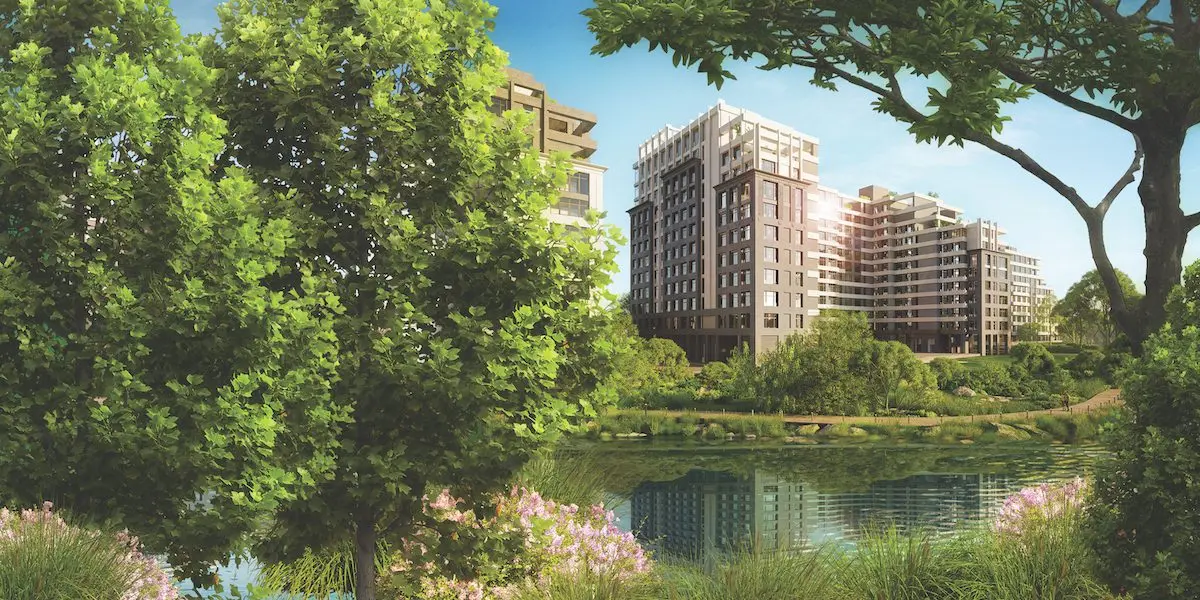Contents
In Russian cities, residential buildings began to be assigned energy efficiency classes. So you can understand which of them are more “green”, where it is more comfortable to live and less communal
In 2016, a program to improve the energy efficiency of residential buildings was launched in our country. Old buildings began to be evaluated by the consumption of resources, and new ones were designed and built taking into account energy-efficient solutions. We understand what energy efficiency is and why it is needed.
What is the energy efficiency of a residential building
This term refers to indicators of rational and efficient energy consumption: economical water supply, heating, ventilation and lighting. Energy efficiency is also affected by the operation of engineering equipment, the design features of the house, and the building materials used.
For example, if the thermal insulation in a building is made with errors or from poor quality materials, the house will constantly lose heat. Heating costs will be high, and the energy efficiency indicator will be low.
You can improve the energy efficiency of your home by:
- individual heating point – delivers thermal energy from a boiler house or CHP to systems inside the house so that the apartments have heating, hot water and ventilation;
- automatic control unit of the heating system – regulates temperature and pressure: for example, if it gets cold outside, the heating starts to work harder;
- LED lightening – shines brightly and at the same time consumes less electricity;
- individual water meters – help to control the consumption of all residents, so as not to overpay.
Why you need to save resources
First, to take care of nature. Houses with a high energy efficiency rating are less harmful to the environment: they do not use more resources than necessary, helping to save electricity and water. For example, such buildings significantly reduce greenhouse gas emissions into the atmosphere (by 62%) and reduce the consumption of drinking water. The energy thus saved should help slow the rise in global temperatures.
Secondly, for the comfort of the residents themselves. High-quality thermal insulation does not allow them to freeze in the autumn-winter period, and automatic engineering equipment controls the temperature in the room, so that even when the weather changes, there is always a comfortable microclimate inside the building.
Thirdly, to save money. Residents pay less for utilities because they use fewer resources. Thanks to individual and common building meters, as well as reliable thermal communications, apartment owners give money only for what they actually used. For example, with an automatic heating system that keeps a comfortable temperature and changes it depending on the weather, a house can save up to ₽300 per month. For the season for each apartment, this results in savings of up to ₽5 thousand.
What are the energy efficiency classes
Since 2016, according to the order of the Ministry of Construction of the Russian Federation, every house in our country has been assigned an energy efficiency class. To understand how much energy a building consumes, experts have identified nine classes: A ++, A +, A, B, C, D, E, F and G.
Energy efficiency classes and their economy
| Class designation | Class name | How much heat energy does a house save or lose? |
|---|---|---|
| A ++ | Supreme | Savings over 60% |
| A + | Supreme | Savings from 50% to 60% |
| А | Very tall | Savings from 40% to 50% |
| В | Tall | Savings from 30% to 40% |
| С | Elevated | Savings from 15% to 30% |
| D | Normal | Save up to 15% |
| Е | Reduced | Loses up to 25% |
| F | Low | Loses from 25 to 50% |
| G | Very low | Loses more than 50% |
Source: Ministry of Justice of the Russian Federation
Houses with a high class – A ++, A +, A and B. They can save from 30% to 60% of resources due to excellent thermal insulation and modern equipment. Usually these are new buildings, for which the future energy efficiency class is determined at the construction stage. You can find out about the class in the project declaration – an official document from the developer.
Normal Energy Efficiency Index – D. A house with this class saves up to 15% of resources and does not need any improvements.
The lowest class is G. It means that the house loses about half of the heat resources. For example, low-quality double-glazed windows or wooden windows let in the cold, so you have to turn on the heaters earlier in the apartments. And if pipes leak somewhere, then the tenants pay for it – as for water consumption.
In our country, it is forbidden to take into operation buildings with an energy efficiency class below B. Today, the lowest energy efficiency classes are usually found in pre-revolutionary houses and houses of Soviet development. However, even their performance can be improved – for example, by installing meters, energy-saving lamps, motion sensors and updating the facade.
The trend to build the most energy efficient houses in our country is only developing: now about 2,2 thousand apartment buildings under construction in our country (23% of the total) correspond to the highest classes A, A + and A ++. One of the market leaders is the Donstroy company, which implements projects with high energy efficiency classes. At the beginning of 2022, it is building 1,8 million square meters. m of houses of class A + and A, and this is 80% of the total volume of the current construction of the company.
Energy-efficient buildings are not the only environmental initiative of Donstroy. Following the principles of sustainable development, the developer also certifies its projects according to Russian and international “green” standards. For example, Life on Plyushchikha became the first residential building in our country to receive the international environmental certificate LEED GOLD. Today, the Reka club house in Ramenki is undergoing LEED certification, and the large-scale Ostrov project in the Mnevnikovskaya floodplain is being designed in accordance with LEED requirements. Two more projects – “Olive House” and “Subbota” – were certified according to the Russian GREEN ZOOM system and received gold and platinum certificates.

The LEED (Leadership in Energy and Environmental Design) green building rating system was developed by the US Green Building Council to evaluate the energy efficiency and environmental friendliness of sustainable development projects. It is considered one of the toughest in the world.










